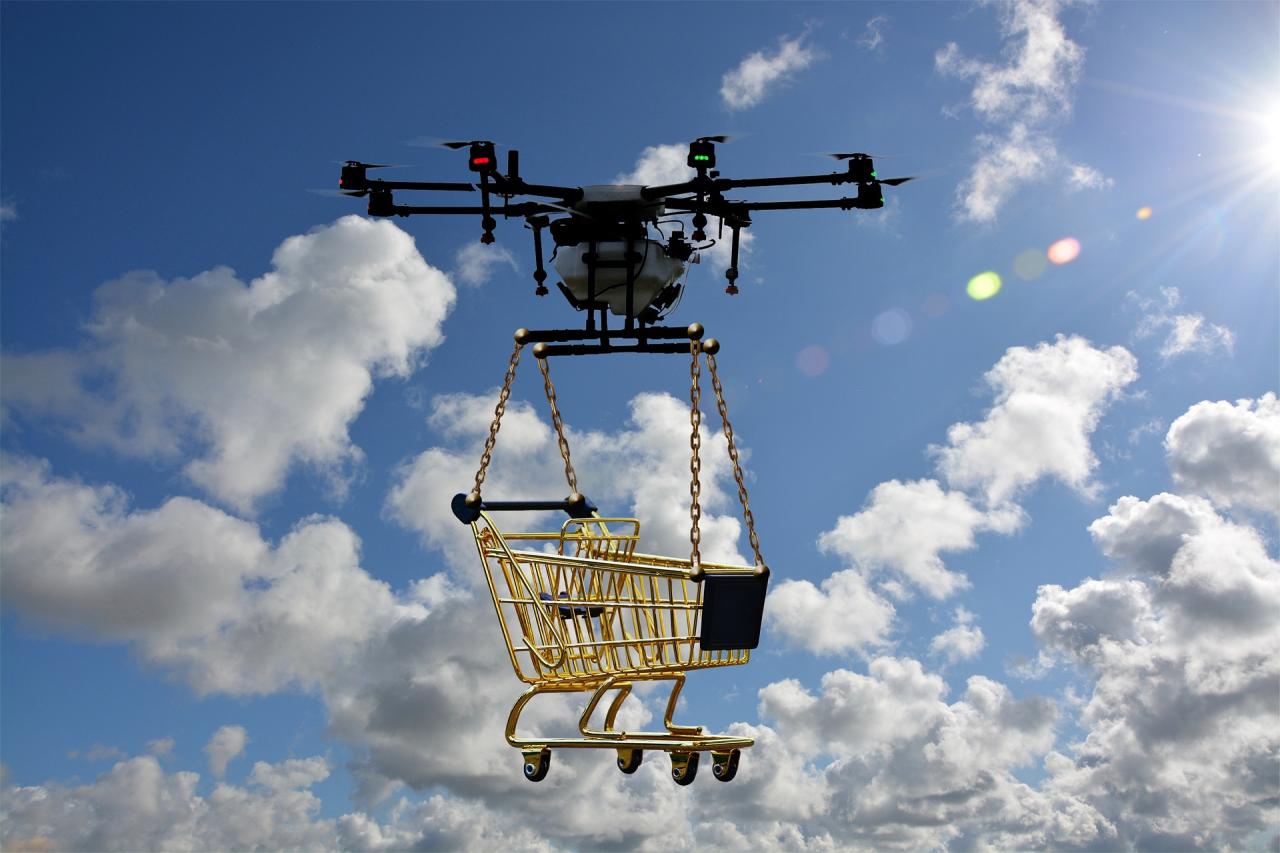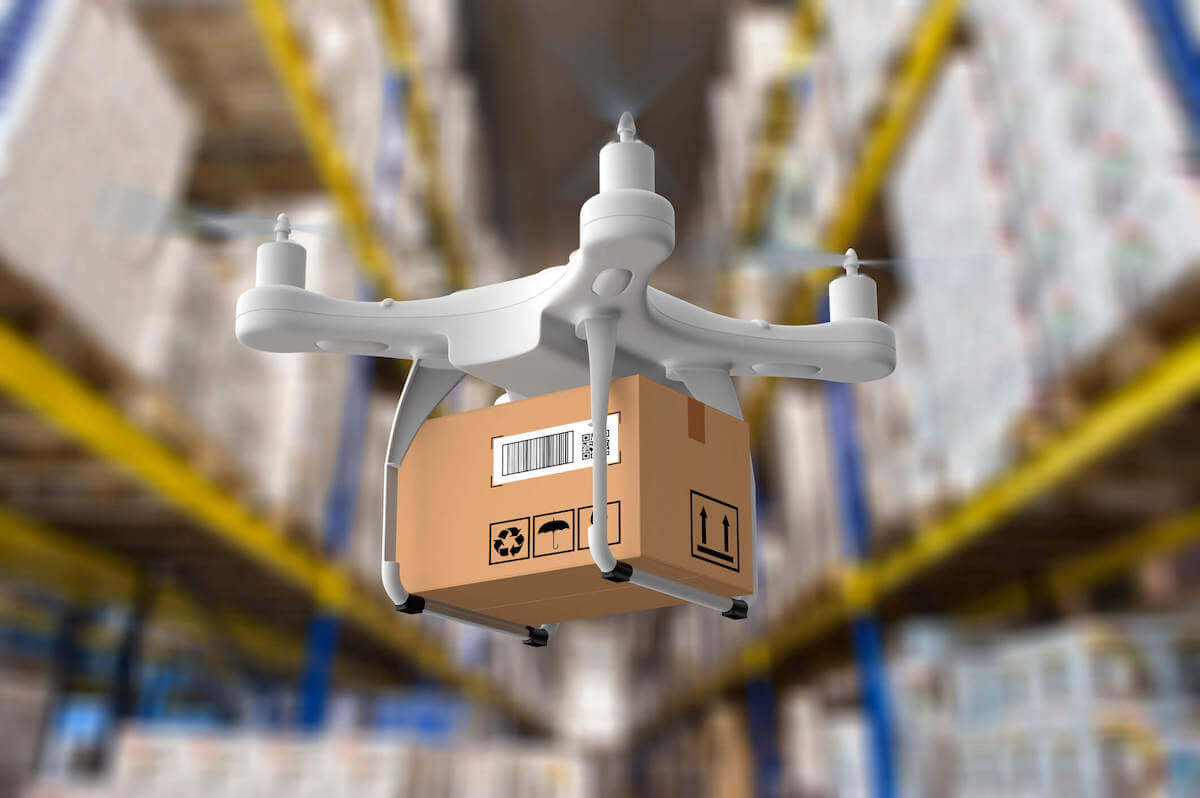Remington drone loads represent a significant advancement in payload delivery, offering efficient and versatile solutions across diverse industries. This exploration delves into the various Remington drone models, their payload capacities, and the types of loads they can carry, from agricultural supplies to medical equipment. We will also examine safety regulations, technological advancements, and the economic implications of utilizing these drones for various applications.
Understanding the capabilities and limitations of Remington drone payloads is crucial for businesses and organizations seeking to optimize their logistics and operational efficiency. This analysis provides a comprehensive overview, covering everything from payload weight restrictions to the latest technological innovations impacting safe and effective load handling.
Remington drone loads often present logistical challenges, particularly concerning weight distribution and efficient flight paths. Understanding optimal drone deployment strategies is crucial, and recent advancements, such as those detailed in this helpful article on drones over new jersey solved , offer valuable insights. Applying these lessons learned could significantly improve the efficiency and safety of Remington’s drone operations, leading to optimized drone loads in the future.
Remington Drone Models and Payload Capacity
Remington offers a range of drones designed for diverse payload applications. Understanding their payload capacities and comparing them to competitors is crucial for selecting the right model for specific operational needs. Factors like motor size, battery technology, and airframe design significantly impact a drone’s payload capacity.
Remington Drone Model Specifications

| Model Name | Payload Capacity (kg) | Dimensions (cm) | Key Features |
|---|---|---|---|
| Remington RX-800 | 15 | 80x60x30 | High-performance motors, extended flight time, advanced obstacle avoidance |
| Remington RX-500 | 8 | 60x45x25 | Compact design, easy portability, reliable performance |
| Remington RX-200 | 3 | 40x30x15 | Lightweight, ideal for indoor and confined space operations, simple user interface |
Payload Capacity Comparison

Compared to competitors like DJI and Autel, Remington drones generally offer a competitive payload capacity within their respective weight classes. For instance, the Remington RX-800 rivals the payload capacity of similar-sized heavy-lift drones from other manufacturers, while the RX-200 provides a good balance between payload and portability, comparable to other lightweight drones in its category. However, a detailed comparative analysis across all features requires a dedicated study involving multiple drone manufacturers’ specifications.
Factors Influencing Payload Capacity
Several factors contribute to a Remington drone’s payload capacity. Larger, more powerful motors can lift heavier loads. High-capacity batteries provide extended flight time, crucial for carrying substantial payloads. The airframe’s design, particularly its structural integrity and aerodynamic efficiency, also directly impacts the maximum weight the drone can safely carry. For example, a robust, lightweight carbon fiber frame allows for a higher payload capacity compared to a heavier, less aerodynamic frame.
Types of Loads Carried by Remington Drones
Remington drones transport a variety of payloads across different sectors. Understanding these applications highlights the versatility and impact of these drones in various industries.
Payload Types and Applications
- Agriculture: Crop monitoring sensors, fertilizer and pesticide sprayers. Precision agriculture applications improve efficiency and reduce resource waste.
- Construction: Thermal cameras for inspection, 3D mapping equipment for site surveying. Drones enhance safety and accuracy in construction projects.
- Surveying: High-resolution cameras, LiDAR scanners. Accurate data acquisition speeds up project timelines and reduces costs.
- Search and Rescue: Thermal cameras, high-definition cameras. Drones aid in locating missing persons or assessing disaster areas.
- Delivery: Small packages, medical supplies. Remote area deliveries offer efficient and timely solutions.
Medical Supply Delivery Scenario
Imagine a scenario where a Remington RX-500 delivers essential medicines to a remote village inaccessible by road. The drone carries a payload of 5kg, including a cooler maintaining the required temperature for vaccines and other temperature-sensitive medications, along with basic first-aid supplies. The drone’s GPS navigation ensures precise delivery to the designated location, while its advanced features enable safe landing and retrieval of the empty container.
Safety and Regulatory Compliance for Remington Drone Loads

Operating drones safely and complying with regulations are paramount. This involves understanding safety guidelines for different payloads and adhering to best practices for safe operation.
Safety Regulations and Guidelines
Regulations vary by region, but generally cover aspects like maximum takeoff weight, flight restrictions in populated areas, and payload type limitations. Specific guidelines might exist for carrying hazardous materials. It’s crucial to consult the relevant aviation authorities for up-to-date regulations in your operating area.
Best Practices for Safe Payload Transportation
| Aspect | Best Practice | Rationale | Potential Consequences of Non-Compliance |
|---|---|---|---|
| Payload Weight | Never exceed the drone’s maximum payload capacity. | Overloading can lead to crashes and damage. | Drone malfunction, injury, property damage, legal penalties. |
| Payload Securing | Secure the payload properly using appropriate straps or containers. | Prevents shifting during flight. | Payload loss, damage to drone or payload. |
| Pre-flight Inspection | Thoroughly inspect the drone and payload before each flight. | Ensures everything is in good working order. | Unexpected malfunctions during flight. |
| Weather Conditions | Avoid flying in adverse weather conditions. | Wind and rain can affect stability and control. | Loss of control, crash. |
Legal Implications of Non-Compliance
Exceeding payload limits or violating safety regulations can result in hefty fines, suspension of operating permits, and even criminal charges depending on the severity of the violation and any resulting damages or injuries.
Technological Advancements in Remington Drone Load Handling
Technological advancements have significantly improved the efficiency and safety of payload handling in Remington drones. These improvements have been incremental, with key milestones marking significant progress in payload capacity and handling systems.
Advancements in Payload Handling, Remington drone loads
Recent advancements include automated payload release mechanisms, improving operational efficiency and reducing the risk of human error during delivery. Improved battery technology allows for longer flight times with heavier payloads. Advanced sensor systems enhance stability and precision, particularly useful for delicate or valuable payloads.
History of Payload Capacity Advancements
Early Remington drones had significantly lower payload capacities compared to current models. Over the years, advancements in motor technology, battery technology, and airframe design have led to a substantial increase in the maximum weight these drones can carry. Key milestones include the introduction of more powerful brushless motors and the adoption of higher-capacity lithium-polymer batteries.
Impact of Advanced Features
Automated payload release mechanisms, for instance, eliminate the need for manual intervention during delivery, improving efficiency and reducing the risk of accidents. Advanced GPS systems and obstacle avoidance features enhance safety, particularly in complex or challenging environments.
Economic Aspects of Remington Drone Loads
Using Remington drones for payload delivery offers significant economic advantages in many applications, when compared to traditional methods. Analyzing cost-effectiveness, considering factors influencing overall cost, and assessing potential ROI is essential for business decision-making.
Cost-Effectiveness Analysis
| Application | Cost using Remington Drone | Cost using Traditional Method | Cost Savings |
|---|---|---|---|
| Delivering medical supplies to remote areas | $500 | $2000 (including transportation and personnel costs) | $1500 |
| Crop inspection in large farms | $1000 | $5000 (including manual labor and ground vehicle costs) | $4000 |
| Construction site surveying | $2000 | $8000 (including traditional surveying equipment and labor) | $6000 |
Factors Influencing Overall Cost
The overall cost of using Remington drones involves drone maintenance, battery replacements, operator salaries, and potential fuel costs (for larger models). Insurance costs and regulatory compliance fees should also be factored into the overall budget.
Return on Investment (ROI)
The ROI for businesses using Remington drones depends on factors like the frequency of use, the cost savings compared to traditional methods, and the lifespan of the drone. In many cases, the significant cost savings and increased efficiency lead to a rapid return on the initial investment.
In conclusion, Remington drone loads offer a compelling solution for efficient and cost-effective payload delivery across a wide range of industries. While adhering to safety regulations and best practices is paramount, the technological advancements in this field promise even greater efficiency and safety in the future. The potential return on investment for businesses adopting this technology is significant, making it a valuable asset for streamlining operations and expanding capabilities.
Remington drone loads often require careful weight distribution for optimal flight stability. Photographers documenting these operations might appreciate the compact yet high-quality image capture of a camera like the fujifilm x100v , ideal for capturing detailed shots in various conditions. Returning to the drones, precise load calculations are crucial for safe and efficient operation of Remington’s aerial systems.
FAQs
What is the maximum flight time for Remington drones with typical payloads?
Flight time varies considerably depending on the drone model, payload weight, and environmental conditions. Consult the specific drone’s technical specifications for accurate estimations.
How do I obtain certification to operate a Remington drone for commercial payload delivery?
Certification requirements vary by region and intended application. Contact your local aviation authority for specific regulations and licensing procedures.
What types of insurance are necessary for operating a Remington drone with payloads?
Appropriate liability insurance is essential to cover potential damages or injuries resulting from drone operations. Consult with an insurance provider specializing in drone operations for specific coverage options.
Are there any restrictions on the types of materials that can be transported using Remington drones?
Yes, restrictions exist regarding hazardous materials. Consult local and international regulations on the transportation of hazardous goods via air for specific guidelines.
